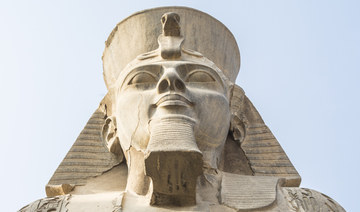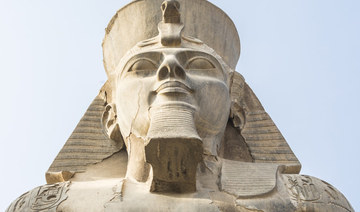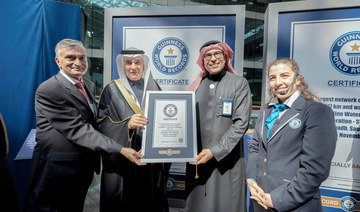LONDON: If you watched “The Tindler Swindler,” Netflix’s hit documentary about fraudster Simon Leviev, whose real name is Shimon Hayut, then you will definitely recognize Cecilie Fjellhoy.
Fjellhoy was one of the women whom Hayut duped out of thousands of pounds by posing as a wealthy heir.
Five years on, Fjellhoy, 33, is ready to find love again and is appearing on “Celebs Go Dating,” a show where a cast of stars — often from reality shows like “Love Island” and “The Only Way is Essex” — go on dates with non-celebrities.
Speaking at the series launch, Fjellhoy said to BBC’S Newsbeat: “I don’t feel like a celeb. I don’t want people to think that I look at myself like a celeb, but I really appreciate that my face is actually known around the world. I am blessed that I’m able to do ‘Celebs Go Dating’ and show a different side to me.”
Fjellhoy seems optimistic about dating after her debacle. She explains she finds dating “fun” and will “continue to have with it.”
She is even back on Tinder. “I never looked at Tinder as the one to be blamed for what happened to me because I met him in real life,” she said, “but I think I went a bit too quick back on the apps.”
Following the release of “The Tinder Swindler,” Fjellhoy received an outpouring of sympathetic reactions from viewers. However, she was also at the receiving hand of misogynistic comments from people who labeled her as a “gold digger” and deserving of the unfortunate events that befell her.
Fjellhoy said she is expecting a backlash to her dating show appearance, saying, “Trolling always happens. I’ve learnt not to read (the comments).”
She believes, however, that is important to shine a light on such comments, explaining that they can be “dangerous.”
“It’s fun to laugh about it, but it can be dangerous in the long run,” she said.
Fjellhoy has been campaigning for more awareness on romance fraud and is calling for training for police and healthcare professionals so that victims can feel better supported. She also wants to help remove some of the stigma surrounding scams so people can feel less ashamed about seeking help if they do fall prey to fraudsters.
Speaking on Hayut’s release, Fjellhoy said it is “disheartening” and that her goal was to “keep people protected from people like him.”
In 2019, Hayut was convicted of four charges of fraud, not relating to Fjellhoy’s allegations, and was sentenced to a total of 15 months in prison. He was released after serving only five. Previously in Denmark, in 2015, he was sentenced for defrauding three women.
Hayut told Newsbeat that he denies the accusations shown in the Netflix documentary.
Fjellhoy said she unexpectedly ran into Hayut at a beach club in Tel Aviv, Israel, where he currently resides.
She said she waved at him and continued on. “I am not scared of him. He cannot hurt me anymore,” she said.
Hayut claims he reported her Tel Aviv visit to the Israeli police and accused her of harassment.
Fjellhoy says she still receives messages from people, young and old, sharing their own stories of romance fraud. Her advice to them is to speak out if they believe they are being scammed, to reach out to family and friends and to recount their experiences. She also advises them to contact the banks as “they’re not your enemy.”
She said: “The thing with fraud (is that) you don’t realize red flags when they’re happening. That’s why it’s dangerous. When you realize you’ve been defrauded, go to the police, go to the bank.”


























